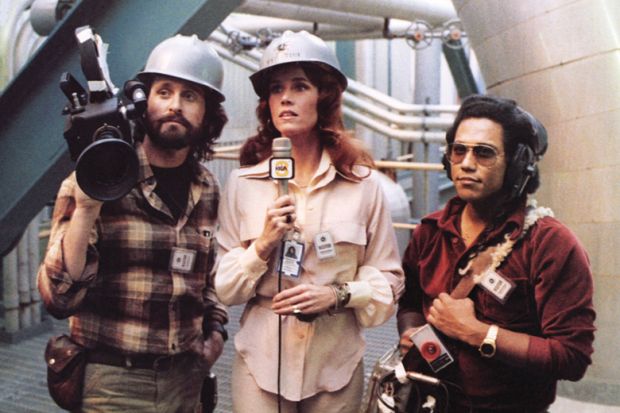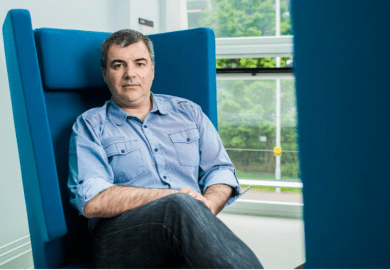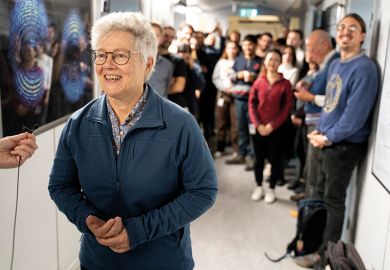“When the air becomes uraneous, we will all go simultaneous,” sang Tom Lehrer in 1959, in anticipation of nuclear armageddon. Twenty years later, Hollywood explored the hazards of civil atomic power in The China Syndrome. It is now 119 years since Henri Becquerel discovered the radioactivity of uranium sulphate and slightly longer since Wilhelm Roentgen identified and named X-rays. Since then humanity has had an ambivalent relationship with radiation and radioactivity. We hope that they bring us significant benefits, but know that they also present substantial dangers.
Timothy Jorgensen’s Strange Glow offers a tour d’horizon of the history and physics of radiation and radioactivity (not necessarily the same thing) and presents risk-benefit analyses of some important applications. His background as an academic working in radiation medicine should make him an ideal person to do this. His book aims to be useful, while at the same time emphasising the human aspects of the story.
Many of the case studies he includes are well researched and mostly reassuring. Who now remembers the scare stories that mobile phones will fry our brains? Jorgensen shows that our complacency is not misplaced. Few people in the UK seem to have worried too much about eating tuna from the Pacific that may have been contaminated by radioactivity from the Fukushima nuclear catastrophe. Once again, the science shows that there is no cause for concern. Contamination of the home by the naturally occurring radioactive gas radon also need not worry most of us. The book’s section on diagnostic X-rays is very strong, with the discussion of mammography showing how difficult it can be to make good public health decisions.
However, Jorgensen is much less convincing on the risks of civil nuclear power. He considers the health consequences of the 1986 Chernobyl disaster, which he argues is the most lethal such event we are likely ever to see. Radioactivity from this catastrophe probably caused 38,800 cancers. Of these, 16,000 were thyroid cancer, which by implication we don’t need to worry too much about, as two-thirds will be cured. The remaining 22,800 apparently represent an increase of only 0.01 per cent in the expected cancer incidence in the affected population, so apparently no great worry there either. While I do not challenge Jorgensen’s statistics, here I find him complacent. He also ignores the risk presented by radioactive waste from atomic power plants, which will have to be stored safely for millennia. What havoc terrorists could cause with only a small amount of the tonnes of material already in storage.
As a sun worshipper, I looked to Strange Glow for information on skin cancer. Cancer Research UK says that there are about 200,000 cases of malignant melanoma a year worldwide, mostly brought on by exposure to the ultraviolet component of sunlight. Even though this number is higher than the total number of radiation-induced cancers that Jorgensen covers, he says that the effects of UV radiation are beyond his scope. This seems lazy but is perhaps just as well, as his description of the physics of UV is less than wholly accurate.
The human aspects that Jorgensen introduces to his account mostly work well, even if they have often been told before, as with Mrs Roentgen and her wedding ring. Others, such as the story of US engineer Carl Pillitteri, who survived the disaster at the Fukushima nuclear plant in Japan in 2011, add relatively little.
A good popular-science book is accurate, informative and entertaining. Jorgensen gets an A for effort, but only a B+ for achievement.
Richard Joyner is emeritus professor of chemistry, Nottingham Trent University.
Strange Glow: The Story of Radiation
By Timothy J. Jorgensen
Princeton University Press, 512pp, £24.95
ISBN 9780691165035 and 9781400880522 (e-book)
Published 9 March 2016
POSTSCRIPT:
Print headline: Dealing with the fallout
Register to continue
Why register?
- Registration is free and only takes a moment
- Once registered, you can read 3 articles a month
- Sign up for our newsletter
Subscribe
Or subscribe for unlimited access to:
- Unlimited access to news, views, insights & reviews
- Digital editions
- Digital access to THE’s university and college rankings analysis
Already registered or a current subscriber? Login




